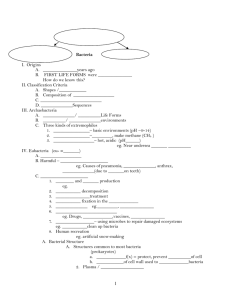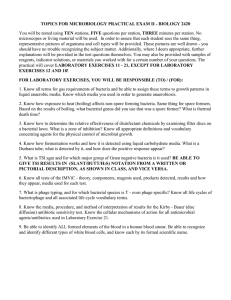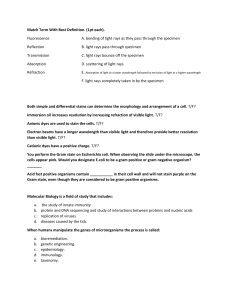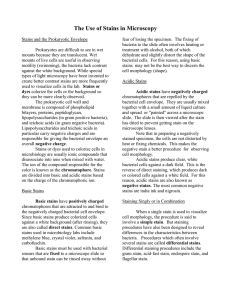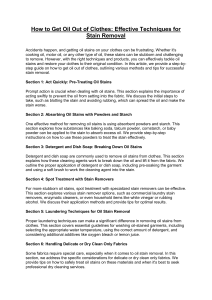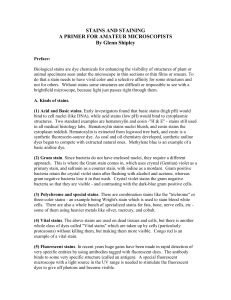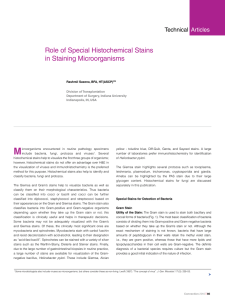2420 Topics for Practical Exam I.doc
advertisement
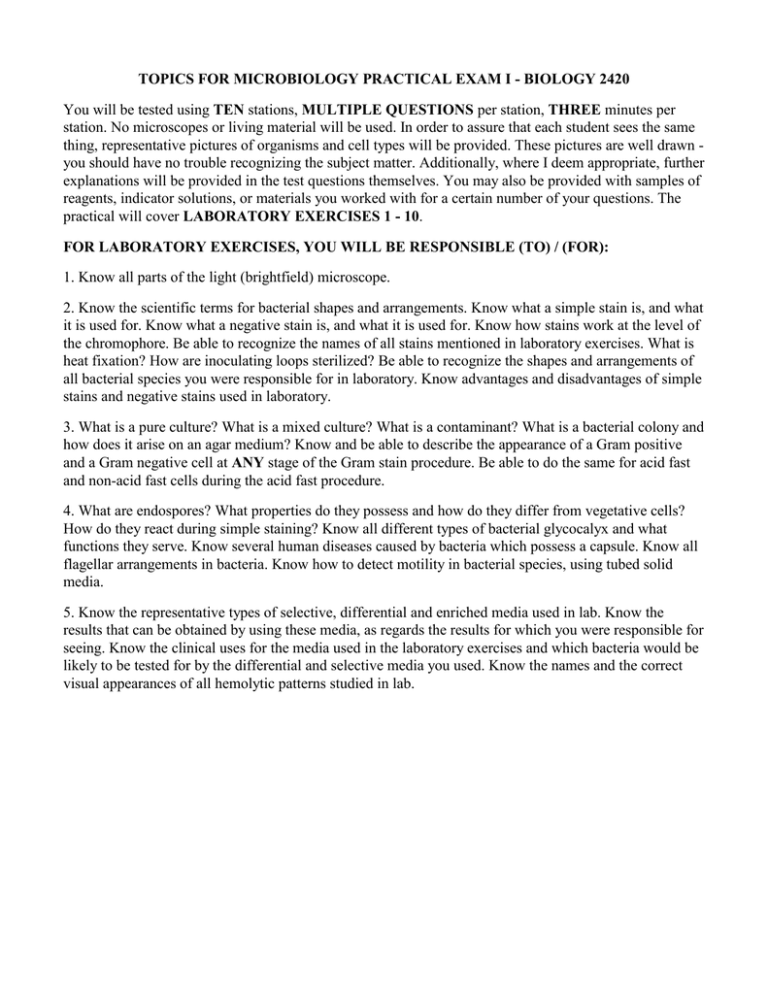
TOPICS FOR MICROBIOLOGY PRACTICAL EXAM I - BIOLOGY 2420 You will be tested using TEN stations, MULTIPLE QUESTIONS per station, THREE minutes per station. No microscopes or living material will be used. In order to assure that each student sees the same thing, representative pictures of organisms and cell types will be provided. These pictures are well drawn you should have no trouble recognizing the subject matter. Additionally, where I deem appropriate, further explanations will be provided in the test questions themselves. You may also be provided with samples of reagents, indicator solutions, or materials you worked with for a certain number of your questions. The practical will cover LABORATORY EXERCISES 1 - 10. FOR LABORATORY EXERCISES, YOU WILL BE RESPONSIBLE (TO) / (FOR): 1. Know all parts of the light (brightfield) microscope. 2. Know the scientific terms for bacterial shapes and arrangements. Know what a simple stain is, and what it is used for. Know what a negative stain is, and what it is used for. Know how stains work at the level of the chromophore. Be able to recognize the names of all stains mentioned in laboratory exercises. What is heat fixation? How are inoculating loops sterilized? Be able to recognize the shapes and arrangements of all bacterial species you were responsible for in laboratory. Know advantages and disadvantages of simple stains and negative stains used in laboratory. 3. What is a pure culture? What is a mixed culture? What is a contaminant? What is a bacterial colony and how does it arise on an agar medium? Know and be able to describe the appearance of a Gram positive and a Gram negative cell at ANY stage of the Gram stain procedure. Be able to do the same for acid fast and non-acid fast cells during the acid fast procedure. 4. What are endospores? What properties do they possess and how do they differ from vegetative cells? How do they react during simple staining? Know all different types of bacterial glycocalyx and what functions they serve. Know several human diseases caused by bacteria which possess a capsule. Know all flagellar arrangements in bacteria. Know how to detect motility in bacterial species, using tubed solid media. 5. Know the representative types of selective, differential and enriched media used in lab. Know the results that can be obtained by using these media, as regards the results for which you were responsible for seeing. Know the clinical uses for the media used in the laboratory exercises and which bacteria would be likely to be tested for by the differential and selective media you used. Know the names and the correct visual appearances of all hemolytic patterns studied in lab.
